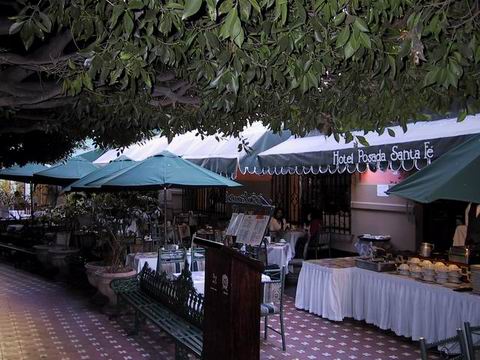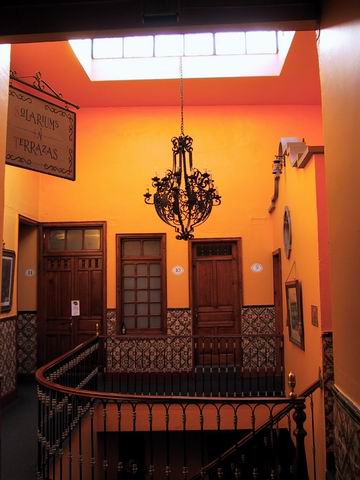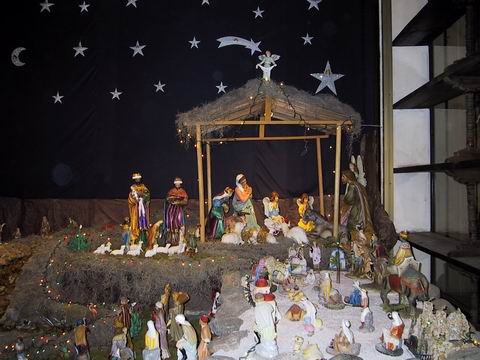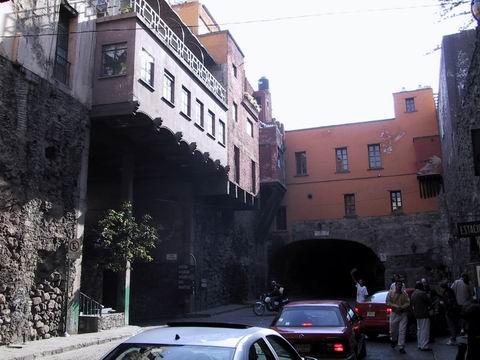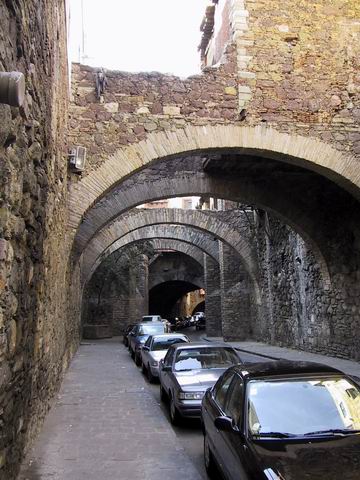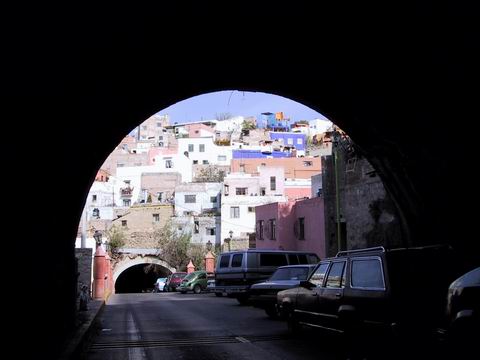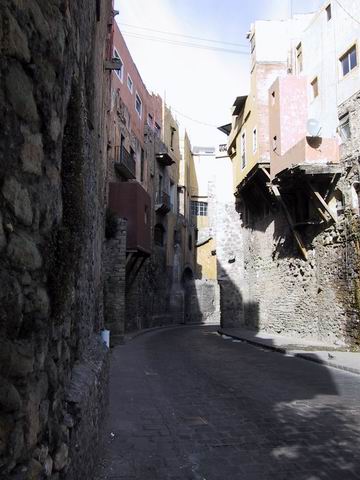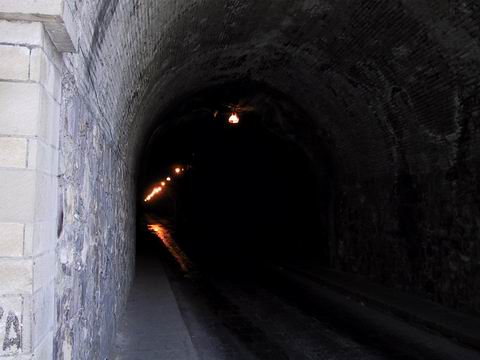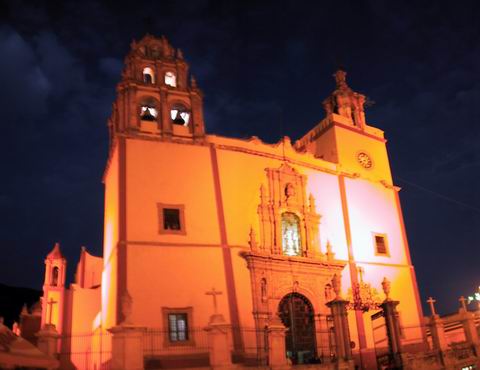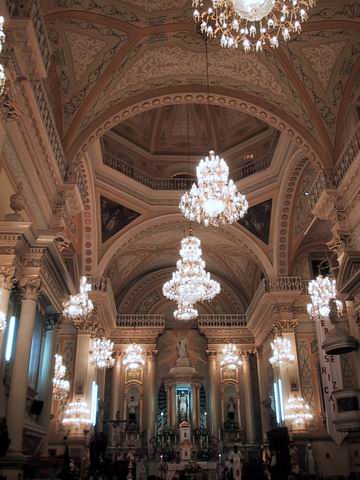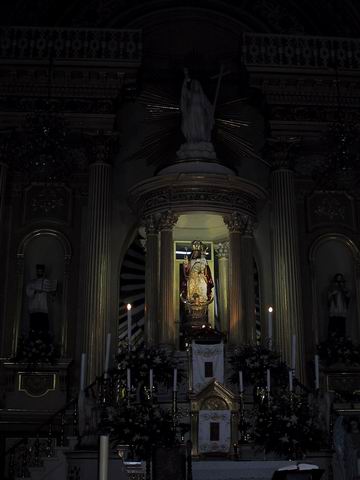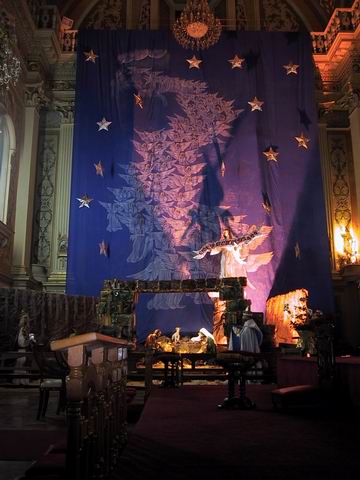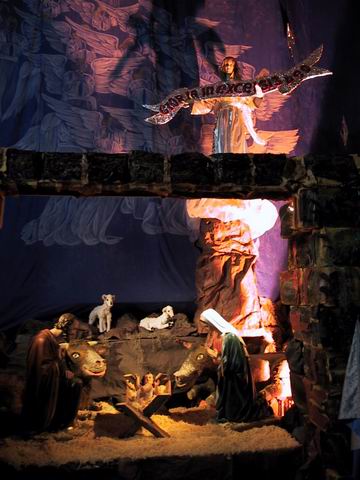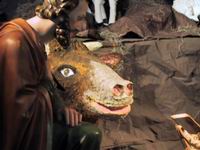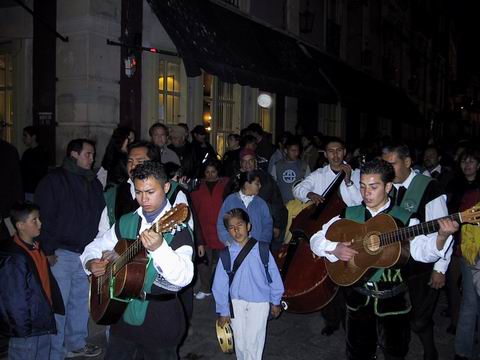We flew to the Leon/Guanajuato International Airport. It was only 30 minutes from
Guanajuato but the roads conspired against us once we reached town. More on that in the
next frame. Guanajuato means 'place of frogs' and is one of Mexico's most romantic cities.
Our hotel was the
Santa Fe
. It was a nice hotel with very nice rooms. The staff was great and helpful. The location
was great - on the main Jardin (Garden Plaza)
For info here is the contact:
Hotel Posada Santa Fe
Address:Jardin de la Union No 12
Phone: 473 732-0084
E-mail:
santafe@redes.com.mx
Web:
www.posadasantafe.com
or for an English site
English Reservation Site

